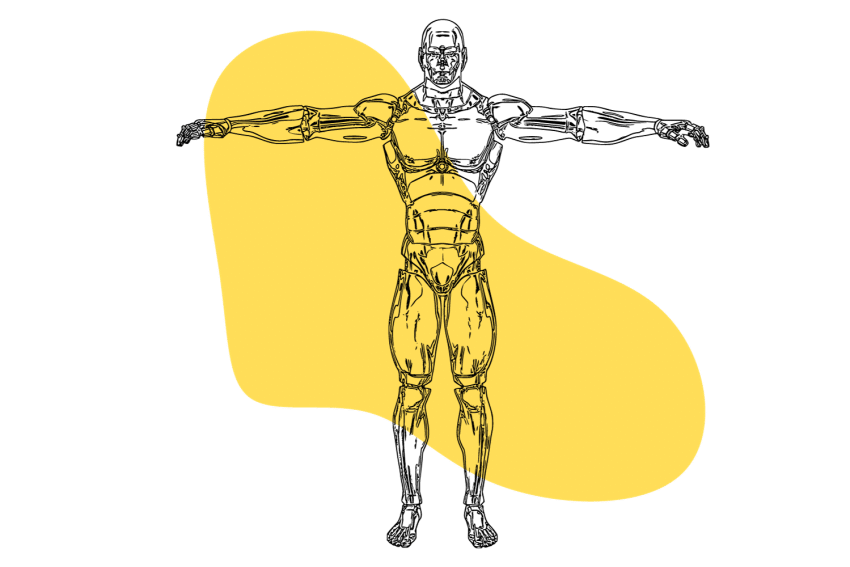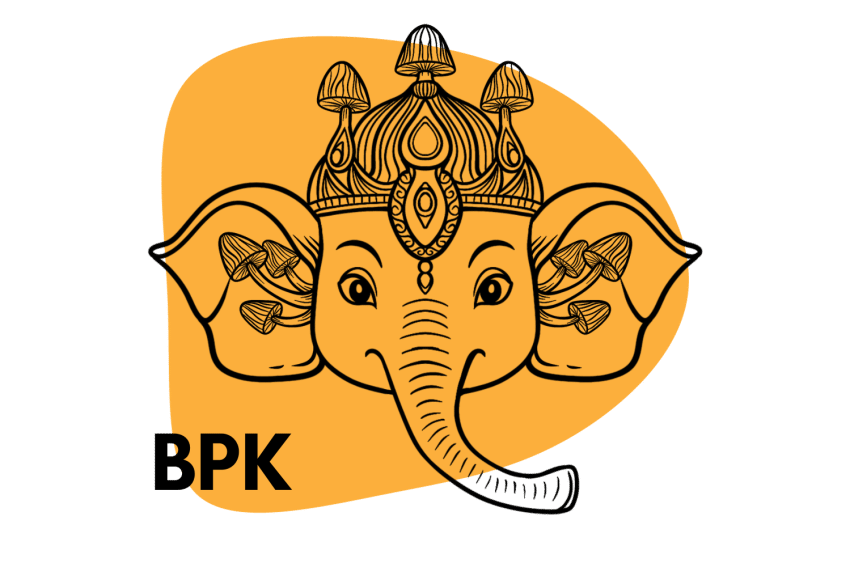How Long Does it Take For Shrooms to Kick In?
Most people experience the earliest psychoactive effects of the shrooms around 45 minutes after taking them.

There are countless stories online of first-time shroom users — and experienced psychonauts, for that matter — who don’t fully understand how long it takes for shrooms to kick in and end up taking more when they shouldn’t have.
The result is a higher risk of a bad trip or overwhelming experience, which is why it’s important to understand how long it takes shrooms to kick in.
This guide explains all you need to know about the onset of psilocybin mushrooms, including when to expect your trip to start, what affects the timeline, and how long they last.
How Long Do Shrooms Take to Kick In?
In general, you can expect the trip to begin around 30 minutes to an hour after taking them.
If you drink mushroom tea or follow the lemon tek method, the effects usually kick in slightly quicker (25–45 minutes).
How Long Should I Wait Before Taking More Shrooms?
The last thing you want is a bad trip or an unexpected, overwhelming experience when taking shrooms. Psilocybin is a relatively potent psychedelic drug, and taking more than your ideal dose can easily cause a negative experience.
There are plenty of internet horror stories of users — first-time users, in particular — taking shrooms, not noticing any effects after an hour, and taking more. Then everything hits at once.
Your best option is to wait 24 hours before taking more psilocybin after your initial dose. This guarantees the doses won’t stack and lead to a bad experience.
If you’re itching to experience your first trip and your initial amount doesn’t seem to be cutting it, wait at least two hours before taking more to limit the risks.

The Shroom Timeline: What Happens When?
A number of factors can vary the timeline, but you’ll usually start to feel the effects between 45 minutes and 1.5 hours [1].
1. Onset (45–90 min)
This beginning phase of the trip will often make lights and sounds seem altered, and you may experience a feeling similar to “butterflies in your stomach.” Some users describe this sensation as a body high or mild euphoria. The feeling will expand out from your stomach through the rest of your body.
About an hour into the trip, you’ll be feeling more intense come-up symptoms, including an altered sense of self, especially as your self-perception relates to your physical body. The body high is significantly more intense at this point.
2. Peak (1.5–2.5 hours)
The peak effects typically kick in around 90 minutes to 3-hours after dosing [2]. By this point, the body high will be quite intense. Depending on the dose, you will start experiencing vivid and intense auditory and visual hallucinations, including objects morphing or twisting and sounds seeming much louder or more noticeable. Peak effects also typically include some level of introspection, coupled sometimes with confusing thoughts or easily lost train of thought.
3. Comedown (2–3 hours)
By the 3 or 4 hour mark, most people will start to feel like the effects are coming down. You’ll experience feelings of waxing and waning intensity, each time peaking at a lower and lower level.
The total duration of effects depends on the dose, whether or not you’ve eaten, and your individual tolerance and metabolism. The short end of the spectrum is around 5 hours duration, and the high end is 10 hours — however, most people will feel the effects of shrooms have worn off by the eight-hour mark.
How Long Does the High from Shrooms Last?
The high from shrooms usually last about six or seven hours. Most people feel completely back to normal by this point, while some take up to around ten hours to feel like the shrooms have completely worn off.

What Affects the Timeline of Psilocybin?
Many things can affect how long shrooms take to kick in, and understanding all of them can help avoid taking too much when in search of a great experience.
1. Experience With Shrooms
Your experience with shrooms can have an impact on when you notice them beginning to take effect. Experienced users tend to be more in tune with the minor changes in perception, so they may start to recognize small changes that signify the beginning of the trip.
First-time users may not notice when the psychedelic starts to affect them, sometimes leading them to believe they need more. It’s always best to wait several hours before taking another dose.
2. Consumption Method
Your consumption method can drastically change when you feel shrooms start to kick in. Most people eat shrooms by themselves or on food to mask the flavor. This standard method usually leads to an onset of effects within 30 to 60 minutes.
Some users prefer to make shroom tea. Since liquids travel through the digestive tract more rapidly than solids, teas can begin to take effect within 10 to 20 minutes.
Some people also mix ground-up shrooms with lemon juice or other acidic liquids. The psilocybin in magic mushrooms needs to be converted to psilocin before you’ll feel the effects, and this transformation is usually completed by the digestive system.
It’s believed that lemon juice begins converting psilocybin into the psychoactive psilocin. This idea is supported by the fact that lemon tek (the name for the mixture) begins to take effect within just 10 minutes for most people.
3. Your Expectations & Environment — “Set & Setting”
Unlike many other drugs, the experience provided by shrooms is often heavily influenced by “set and setting,” and that includes the perceived onset of effects.
“Set” refers to your mindset going into the experience, and your expectations can cause a rapid or more delayed onset of effects.
“Setting” refers to your physical setting. If you’re in a familiar place with a trusted trip sitter, you may feel more comfortable succumbing to the psilocybin than if you’re in an uncomfortable or unfamiliar area.
As such, a proper setting and an expectation of a fast onset could allow you to perceive the effects earlier than the standard 30 minutes.
4. Your Body Weight
Believe it or not, your body weight can affect how soon after you consume shrooms you begin to feel the effects. A smaller dose for a larger person might produce only mild peak effects and slower onset of effects. You may not notice anything until an hour and a half in, when the peak effects start to kick in.
5. Shroom Species
There are many different species of “magic mushrooms,” and they all contain varying amounts of psilocybin and psilocin.
Remember, psilocin is the compound that actually causes your trip, while psilocybin in the mushroom must be converted into psilocin by the body.
Since the digestion of psilocybin and conversion process is mostly what delays the onset of effects, shroom species with higher natural levels of psilocin will more than likely lead to a trip that comes on more rapidly.
6. Stomach Contents
How much you eat leading up to your shroom consumption will play a role in how quickly they take effect. Digestion is limited by the rate at which your digestive system can break down contents in your stomach.
The more you eat before consuming shrooms, the longer it will take for your body to get around to converting the psilocybin into psilocin and for your trip to begin.
How Long Does It Take Shrooms to Kick In On a Full Stomach?
For most users, taking shrooms on a full stomach can delay the initial effects for one to two hours. This is one of the most significant changes to onset timelines, so eating a lot leading up to shroom consumption is one of the primary reasons new users end up taking too much.
How Long Does It Take Shrooms to Kick In On an Empty Stomach?
On an entirely empty stomach, you may begin to feel the effects of shrooms just 10 minutes after consumption. For most users, the experience of the magic mushrooms begins in under 20 minutes when eaten on an empty stomach.
7. The Dosage Used
Finally, the dose you take can have a slight impact on how quickly the effects set in. Larger quantities tend to hit harder more quickly, limiting the likelihood of mild effects going unnoticed. This is especially true for first-time or inexperienced users.

How Long Does Psilocybin Stay In Your Body?
Psilocybin is converted to psilocin shortly after consumption, so the actual psilocybin compound remains in your system for just a few hours in most cases. Psilocin can last in your body for up to 24 hours, and traces can be found in your hair for about three months.
Do Shrooms Show Up On a Drug Test?
It’s unlikely; shrooms probably won’t show up on a drug test. Most drug tests include just a urinalysis, and since nearly all traces of psilocybin mushrooms are gone from blood and urine within 24 hours, they probably won’t appear unless you take shrooms just a few hours before your test.
Psilocybin can show up on drug tests that involve a hair sample for about three months after consumption [3]. However, these tests are rare and prohibitively expensive for most purposes, so it’s unlikely you’ll ever have your hair tested for drug use.

Wrapping Up: Understanding the Onset of Shrooms
Understanding how long it takes shrooms to kick in is crucial for having a positive shroom experience. There are many stories of first-timers thinking 30 minutes is long enough to wait, not noticing any effects an hour after, and taking another dose. This is one of the best ways to have a bad trip or overwhelming, negative experience.
Understand that everyone’s body is different, and many factors affect the onset of shrooms. Most people will feel the trip begin within 30 to 60 minutes. Experienced users might take less time, as could people who take the shrooms on an empty stomach or go in with the expectation that it will be a while. The consumption method can also change the effects timeline drastically.
If you eat shrooms and don’t feel anything, it’s best to wait 24 hours before trying again with a higher dose. If you’re really eager to trip, you should wait a minimum of three hours before taking more. This helps reduce the risk of a delayed onset of effects and a bad experience.
Resources Used
- Daniel, J., & Haberman, M. (2017). Clinical potential of psilocybin as a treatment for mental health conditions. Mental Health Clinician, 7(1), 24-28.
- Griffiths, R. R., Johnson, M. W., Richards, W. A., Richards, B. D., McCann, U., & Jesse, R. (2011). Psilocybin occasioned mystical-type experiences: immediate and persisting dose-related effects. Psychopharmacology, 218(4), 649-665.
- Martin, R., Schürenkamp, J., Gasse, A., Pfeiffer, H., & Köhler, H. (2015). Analysis of psilocin, bufotenine and LSD in hair. Journal of analytical toxicology, 39(2), 126-129.









